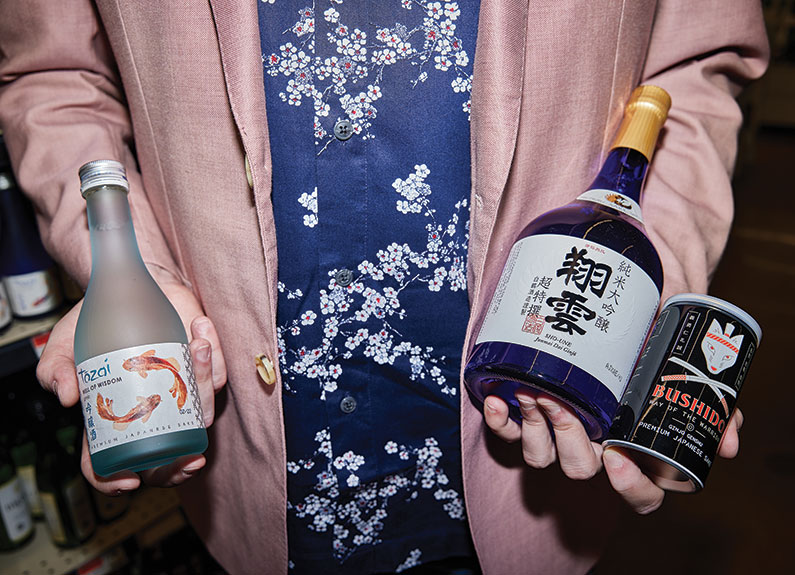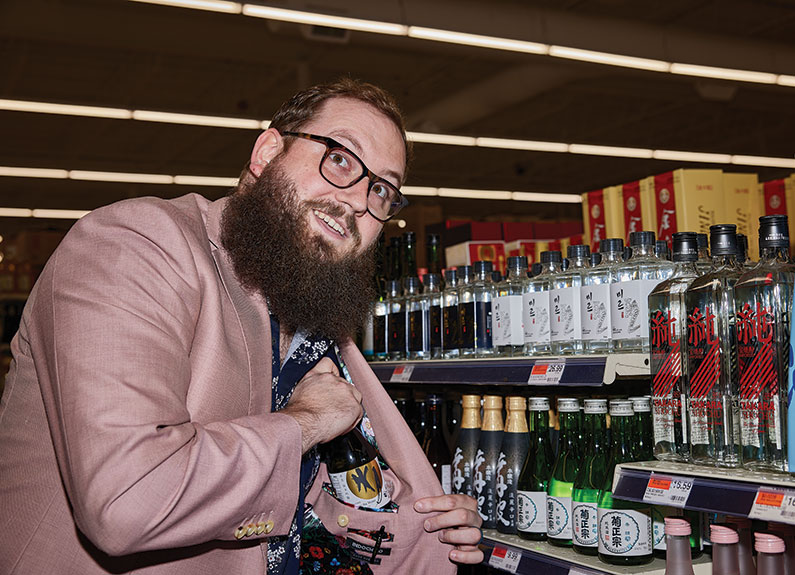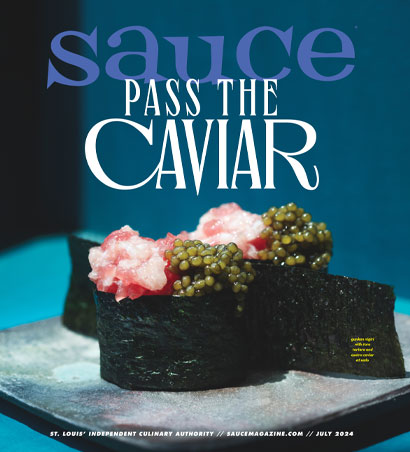Shop for sake in St. Louis like a pro
It’s easy to be overwhelmed when approaching sake as a newcomer, but don’t collapse onto the age-old crutch of choosing the bottle with the prettiest label. Take a pause and follow a few simple tips that will have you eyeing the sake shelf at your local international grocery store or bottle shop with confidence.
Where should I shop?
Browsing international grocery stores like Global Foods and Jay International Foods is one option. Pan-Asia Supermarket has the biggest selection of sake we’ve seen in St. Louis, ranging from futsushu “table sakes” to more refined options. However, unless you happen to bump into a sake aficionado while you’re shopping, you may not be able to find anyone who can offer advice to inform your purchase.
Andrew Lamb of High Water Sake, a certified sake sommelier who is running sake education and certification programs in St. Louis, recommends visiting a specialty wine or liquor shop - Parker’s Table, Starrs, The Wine Merchant or Intoxicology – where you can ask somebody for recommendations. The Wine & Cheese Place in Clayton is a good place to start, offering a variety of sakes at different price points. Even if your local wine shop only has two or three sakes, there’s a good chance they’ll be quality picks.

How much should I spend?
You can buy a decent bottle of sake for around $15 to $25. A higher budget obviously unlocks access to a broader range and better quality of sake, but if you’re just getting started there’s no need to drop hundreds of dollars on a bottle. Sommelier Patricia Wamhoff of Take Root Hospitality says $30 to $60 is enough to buy a “really good” sake.
Reading the label
While a bottle’s label may feature Japanese kanji (the characters used to write in Japanese) exclusively, the importer’s label on the back of the bottle will be in English. Typically, the label might provide information on the grade of sake, flavor profile, production region and the type of rice used.
Light, easy drinking honjozo sakes are a good entry point, Lamb said. On the low end, futsushu is cheap, low-grade sake. Other types of sake worth noting include nigori (cloudy sake) and yamahai – Kira Webster, beverage director at Indo and Nippon Tei, and Wamhoff both recommended Shiokawa Cowboy for an interesting example of this ancient style. Lamb stressed that flavor profiles can still vary significantly within each grade of sake. “The flavor of sake is in the 10,000 decisions the brewer makes during the process,” he said.
Sake Meter Value (SMV): A scale that indicates the relative sweetness or dryness of the product. SMV runs from the sweetest at -15 to the driest at +15. Webster said that she often uses a customer’s wine preference as a barometer for what sake they might like. “We’ll ask them, ‘Do you typically like sweeter drinks or dry drinks?’” she said. Most customers lean on the dry side – in that realm, Webster’s go-to recommendation is Manotsuru Demon Slayer.

Polishing ratios: A percentage that indicates how much of the rice grain is milled away prior to fermentation, a process that directly impacts a sake’s flavor as it exposes more of the rice starch during fermentation. Ginjo and daiginjo sakes have progressively higher polishing ratios than honjozo sake. “As we move down that ginjo to daiginjo range, we're expecting a lot more fruit, a lot more aromatic, a little more floral,” Lamb said.
“It’s like taking a sauce and reducing the sauce down,” Wamhoff explained. “When you reduce it down, it’s going to have more flavor intensity. Daiginjo can be that, but they can also be more delicate, more floral overall.”
Junmai: A term that indicates no distilled alcohol has been added to the sake. Distilled alcohol is often added to sake to enhance flavor and as a preservative. You might see the term either on its own or appended to another grade, i.e. junmai ginjo or junmai daiginjo. Junmai sakes tend to be bolder and more “in your face” than alcohol-added styles, Lamb said.
Production date: Indicates when the sake left the brewery. “There is a shelf life, so to speak, for sake, and the fresher the better,” Wamhoff said. The production date is not always immediately obvious, but if you’re shopping in September 2022, beware of buying sake with a production date earlier than 2021.
Ones to Try
Both Wamhoff and Lamb said Tozai’s range of sakes offer an approachable gateway to the diversity of sake. Lamb added that Tozai, along with Rihaku Wandering Poet, offer a “beautiful introduction point” for people who have never tried sake. “They’ll change the way you think about what sake can be,” he said. Webster said Konteki Tears of Dawn is a favorite among the Indo team.
Learn More
Andrew Lamb's High Water Sake will host its first Introductory Sake Professional course on November 14 at Work & Leisure. Attendees will receive a certification from the Sake Sommelier Association. The $200 course runs from 6 p.m. to 10 p.m. and covers sake production, sake history and culture, sake tasting, and serving etiquette. The evening will include six premium sake tastings from Kome Collective. Sign up on the High Water Sake website.
Tags : Shops
Most Recent
Drink this savory martini at The Lucky Accomplice in St. Louis
The Lucky Accomplice’s bar manager Corey Moszer is thinking outside the box …






